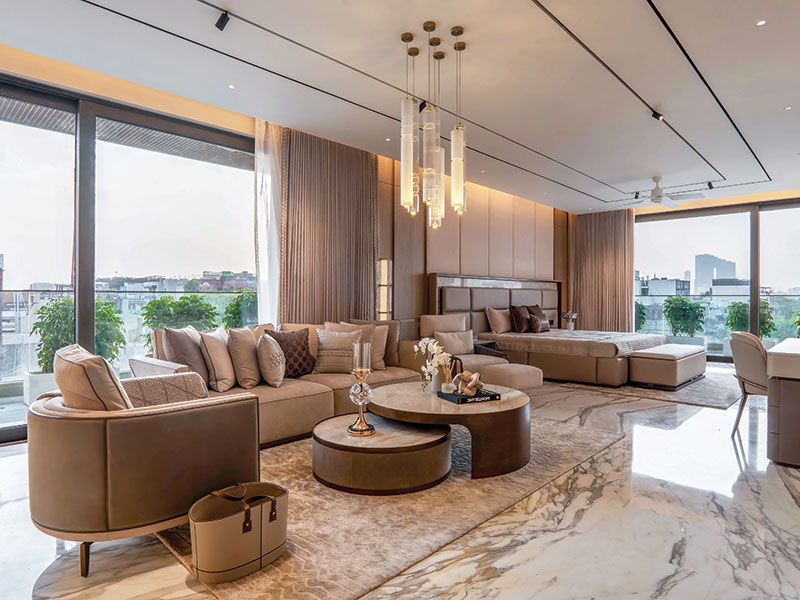
As we witness a paradigm shift with every industry globally, we also notice a change in the development of infrastructure, which has only resulted in a suburbanised expansion of cities. Even though we cannot contain the increase of infrastructure demand that urban growth entails, we need to make adequate room to accommodate more innovative, inclusive, and sustainable models of infrastructure in the post-Covid19 world.
There are several concerns with regards to the redevelopment of infrastructure, the prime one being its environmental impact concerning growing density and its direct influence on the resources. In this context, redevelopment of under-utilized urban areas is a step in that direction, which needs to be perceived with a fresher perspective as a model with access for all, clean air and reduced congestion. A systematic approach addressing vital aspects of urban economy, work & health, decent housing for all, social coherence and cultural identity, sustainable public access resource-conserving mobility, and an empowering urban democracy are critical for establishing sustainable planning goals for envisioning the new world order. To achieve a balance of essential elements of Green-development with adequate infrastructure to cater to the populace, a vertical growth model will reduce the per-capita carbon footprint and bring about a revolution in the Indian building industry.
With the new developments in line recovering from the pandemic, urbanisation is inevitable. What we need is planned urbanisation that synergises with augmented infrastructure in the city. Our future developments need to be derived with a step-by-step approach that can have a significant impact, that is if large pockets of growth are tied up to a bigger infrastructure network. There is a critical need to review redevelopment as an opportunity to upgrade and energise the city’s dying and inadequate infrastructure. As urban designers and architects, we need to contribute here drastically by thinking Global and acting Local, keeping in mind the current status of global resources.
The focus should be on bridging the gap between architecture and planning and bringing a holistic vision for a progressive city. Currently, urban infrastructure is treated as isolated envelops of development and do not converge to form a larger picture. The new-age infrastructure should be looked at from a broader perspective on an urban scale that facilitates ease of access for pedestrians and cyclists and gives preference to the renewed norms of public transport.
Transportation is one of the approaches which catalyses the growth of thriving cities, so it’s no wonder that a good deal of infrastructure spending is dedicated to the development of railways and rapid mass transit systems. Although, new guidelines need to be put in place for urban public transport systems, which in turn will also bring many challenges to the fore and numerous construction technologies that will have to be used to address the issue. A systematic approach that responds to a phased-out model with low ridership in the initial course is required to gain public trust in mass transit systems. Adhering to the social distancing protocols, we need to ideate well distributed hours to limit contact, and also focus on non-motorized transports in the initial phases.
Under a scheme by the Indian Railways, we undertook the redevelopment of Railway Stations at Tirupathi, Nellore and Dehradun. Apart from fulfilling functional requirements, these new projects are designed to accommodate all safety protocols to fully enable a seamless and safe transportation experience for the passengers. Especially considering the pandemic, the movement of the arriving and departing passengers at the Tirupati Railway Station is kept segregated for minimal contact. The redeveloped station is also envisioned with state-of-the-art passenger facilities, parking needs, retail options and food courts.
The efficiency of public transport depends on the availability of different transport modes and their connectedness. Developing railway stations as multimodal hubs can efficiently enhance the overall quality of urban infrastructure by reducing distances and travel time, offering maximum comfort to its users. A similar approach was taken while redesigning the Dehradun Railway Station, to restructure its core area and reduce traffic congestion by introducing a new connection to the station complex. Incorporation of non-motorised vehicular routes and dedicated zones for pedestrians are required to step towards a multi-modal development and ensure a safer and comfortable transportation system. New business models and strategies need to be developed for encouraging a new transit system that focuses on shared mobility and digitisation of public transport infrastructure.
At the Nellore Railway Station, the customer facilities have been planned in accordance to the new social distancing norms with additional spaces for passenger’s waiting area and concourse area to cater to a larger inflow of users and the flexibility to bring in contactless and sensor-based systems. Other passenger amenities like retail shops, cloakrooms, food courts, along with ATMs and pharmacy, are also provided within the station complex.
Like most of the other industries, the mass transit and public transport industry is also facing the urgent need to transform its infrastructure facilities and offer a better and safer experience. Capacity management, contactless ticket generation and other sensor-based security measures will have to be installed in place. The focus needs to shift on how to make the rider feel more confident and safe by developing user-centric transportation services. It is well known that public transportation is the backbone of cities, hence providing vital services, particularly in times of a pandemic, allows us to shape new forms of mobility. This recovery period can also lead to the growth of cities towards a revamped urban model. Using Covid - 19 as an opportunity to develop, mass transit requires the use of technology and data in new ways to re-energise the city’s infrastructure.















